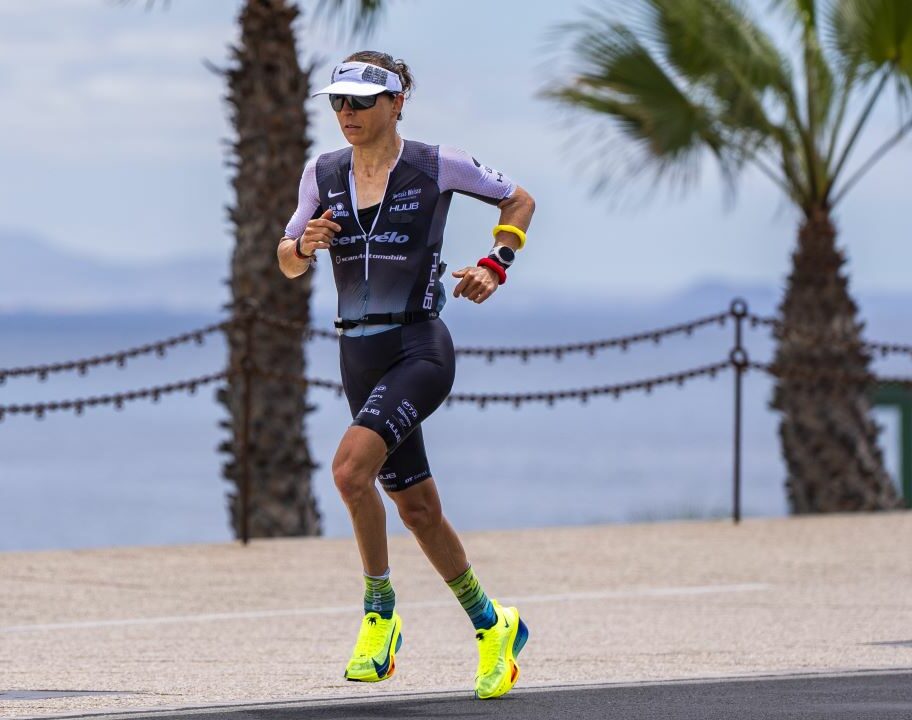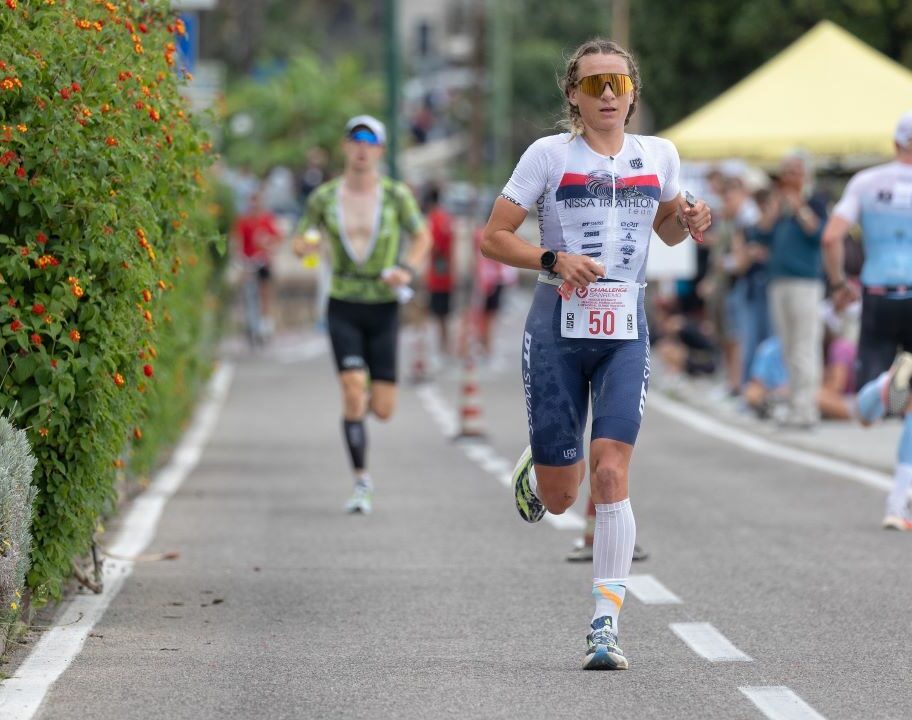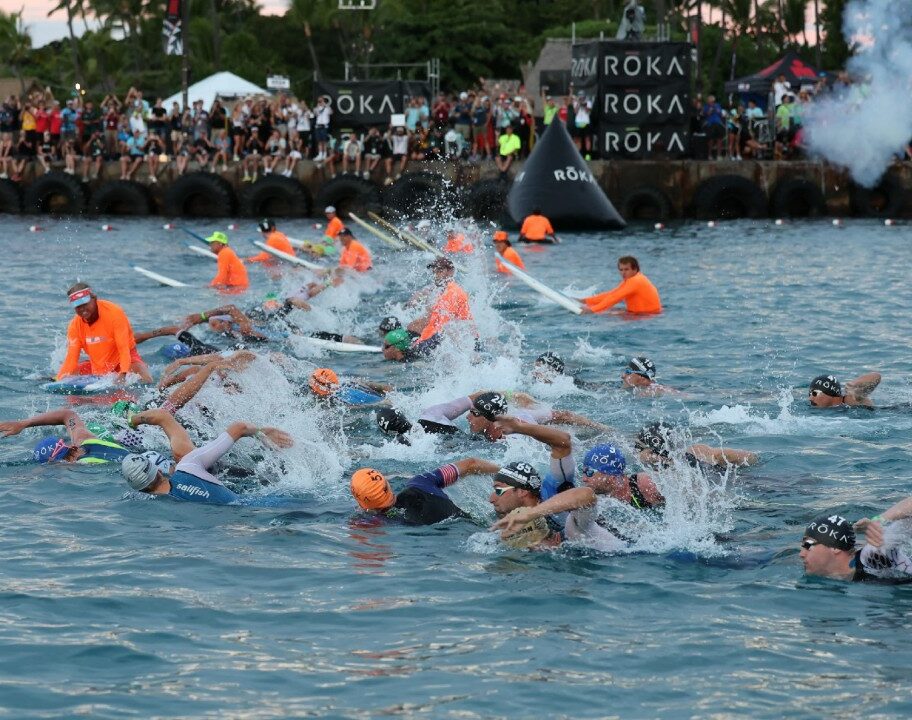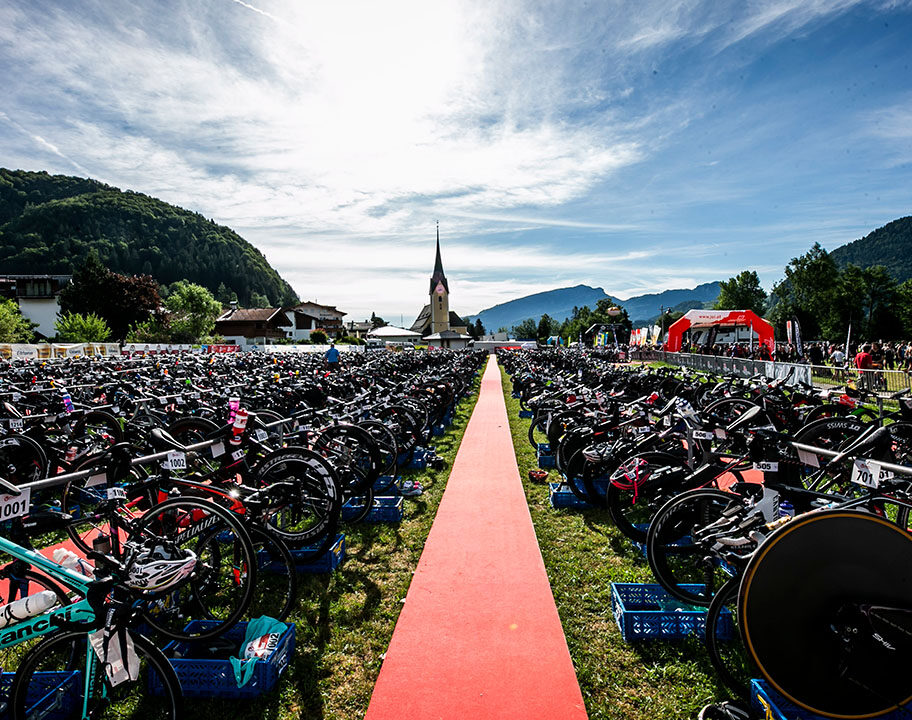Macronutrients make up the three staple components in our diet: carbohydrates, proteins and fats. But why are they so important, and how much of each macro do you need to optimise your triathlon performance? We spoke to expert performance nutritionist Harvey Fortis from Total Endurance Nutrition to find out more about the role macronutrients play in sports performance – and how to make sure you’re getting the right balance to fuel your training, racing and recovery. Keep reading to get Harvey’s insights.

What are macronutrients?
Macronutrients are the three main nutrients that formulate a balanced diet. These are carbohydrates, fats and proteins, and each has its own unique function. Let’s take a deeper look at the role each macro plays, and common sources.
Carbohydrates
“Carbohydrates are the body’s primary energy source and are important for maintaining an athlete’s energy requirements. They also help regulate overall health and physiological function,” Harvey explains.
“For athletes, carbohydrates are especially important for endurance exercise. The body stores carbohydrates as glycogen in muscles and the liver, but these reserves are limited. During exercise, particularly prolonged and/or high-intensity work, carbs are broken down into glucose, which fuels our muscles, allowing us to sustain muscle contractions and, therefore, performance.
“Athletes have limited storage but a high usage rate of carbohydrates, making regular intake and replenishment key for endurance athletes.”
Common carbohydrate sources
When we hear ‘carbs’ we can often exclusively think of things like pasta and bread, however carbohydrate sources are actually far more varied. “Common sources of carbohydrate include grains (oats, rice and quinoa), potatoes and sweet potatoes, fruits, vegetables and sweets.”
Protein – not just for bodybuilders
“Protein is essential for muscle repair and recovery,” Harvey highlights.
“While protein intake is commonly associated with strength and power sports, it is equally important for endurance athletes to support muscle maintenance, immune function, and enzyme production.”
Protein sources
You can get your protein intake from a range of meat, dairy and plant-based sources. “Common sources of protein include lean meats, poultry, fish, eggs, dairy, legumes, tofu, and nuts.”
Fats: a fundamental macronutrient for athlete health and wellbeing
Dietary fat has taken a bit of hit on the reputation front over the years, but despite the many misconceptions around fat, it’s actually an important part of our diet – especially for endurance athletes.
“Fats provide a key energy source and, along with carbohydrates, can be broken down and used for energy during exercise, particularly during long-duration and low-intensity activities.”
“Fat also importantly supports hormone production, cell function, and the absorption of fat-soluble vitamins. Despite its misleading name, fat intake is fundamental for athlete health and well-being and provides an effective way for athletes to meet their energy needs.”
Sources of fat
You can incorporate fat into your diet from a number of sources, Harvey highlights avocados, nuts, seeds, olive oil, fatty fish (such as salmon) and full-fat dairy.
How much of each macronutrient do triathletes need? Guidelines on how much carbs, protein and fat to target per day
For many of us, knowing how much of each macronutrient we need can feel a bit confusing. And as Harvey explains, there’s no real one size fits all answer here. “The amount of each macronutrient you need depends on your body weight, training intensity and volume.”
This is why we often discuss the amount of carbs, proteins and fats required per day in terms of grams per kg of bodyweight, to tailor the amount to the individual.
“Ultimately, athletes should adjust their intake based on their energy expenditure—higher on heavy training days, lower on rest days. Athletes should consider how their nutrition supports recovery, adaptations, performance during exercise, and preparation for subsequent work.”
While the answer to ‘how much protein do I need?’ or ‘how many gram of carbs should I have?’ is really – ‘it depends’. Below, Harvey provides some general guidelines on macronutrient intake per kg of bodyweight for endurance athletes.
carbohydrate, protein and fat intake per day guidelines for endurance athletes
Carbohydrates: 5-10g per kg of bodyweight per day.
Lower range for moderate training days: 5-7g/kg
Higher range for heavy training or race preparation: 8-10g/kg
Protein: 1.2-2.2g per kg of bodyweight per day
Lower range for general endurance training: 1.2-1.5g/kg
Higher range for intense training blocks or recovery phases: 1.6-2g/kg
Even higher range which can be recommended for athletes attempting to drop fat mass but maintain muscle mass: >2g/kg
Fats: 1-1.5 grams per kilogram of bodyweight per day.
“Typically, fat and protein intake can remain stable and consistent over time, while the main factor to control and adapt is carbohydrate intake. This should reflect training demands, as more is needed on higher training days to prepare for and recover from workouts. When you use more, you consume more (pre, during and post sessions).”
Top tips for hitting your macro goals – without overcomplicating it
Meal times starting to sound more like a maths class? If all the data tracking isn’t your thing, we asked Harvey for some tips that will help you to balance your macros, without needing a calculator.
“Athletes are busy and must balance training with many other life commitments. While food tracking can be useful in small doses, it can also be labour-intensive to do accurately. Tracking food all day, every day is unnecessary – having the right understanding allows for more informed decisions to support your needs.”
“It’s useful to be mindful of how your body feels, and to have certain cues to guide you.”
Listen to your body
“Instead of strict tracking, pay attention to signs that you are fuelling adequately (or not). It is a skill learnt over time, but the more you look to body cues, the better judgement you will develop.”
“For example, while hunger can sometimes indicate mild dehydration, in excess and if experienced frequently over time, feeling hungry over time is a strong sign you aren’t consuming enough energy. Also, play close attention to how you are handling training and recovery—if you’re struggling to hit usual performance numbers, recovering poorly, or unable to progress your workload as expected, you may be under-fuelling. For some, monitoring weight changes over time (understanding that daily fluctuations are normal) can also provide useful insights, although it’s not needed for everyone.”
Follow the plate method
“A simple baseline approach is to use the plate method. This is where half your plate is carbs: whole grains, fruits, vegetables. And then one quarter is protein, and one quarter is healthy fats. Increase your carb content on higher training days.”
Meal prep
“Prep simple meals in advance. Batch-cook staple meals with a variety of whole, colourful foods to have better control over your intake.”
Have a flexible approach – and NEVER under fuel
“I like to say that you should always eat enough, sometimes over-fuel – but never under fuel. I suggest that your baseline should involve moderate carbohydrate intake, then increasing carbs on heavier training days. Understand that not every day will be perfect, but aiming for consistency leads to much more effective results.”
“We always say that 80% done always, trumps 100% sometimes.”
What about micronutrients?
So that’s macronutrients covered – which are essentially the major building blocks for your nutrition. But in order to function properly, our bodies need more than just carbs, fats and proteins. This is where micronutrients come into the picture.
“While macronutrients provide energy, micronutrients play a crucial role in recovery, immune function, and muscle contraction,” Harvey explains. We asked Harvey to outline the key micronutrients for endurance athletes, the role they play in sports performance and recovery. Plus, the common sources to make sure you’re getting enough. The good news is, that if you’re following Harvey’s earlier advice about incorporating a variety of whole, colourful foods into your staple meals, then chances are you’re getting a lot of your micronutrients.
Essential micronutrients for endurance athletes
- Iron
“Essential for oxygen transport, because it helps form haemoglobin, which carries oxygen in the blood – a crucial process for athletes. Low iron levels can lead to fatigue and decreased performance. Found in red meat, leafy greens, legumes, and fortified cereals, with animal-based products having greater bioavailability. Consuming vitamin C-rich foods alongside plant-based iron sources enhances absorption.”
- Calcium
“Supports bone health, reduces the risk of stress fractures, and aids in muscle function. Sources include dairy products, leafy greens, almonds, and fortified plant-based milks.”
- Vitamin D
“Plays a crucial role in calcium absorption, immune function, and even muscle performance. Vitamin D can be found in fortified dairy products, fatty fish, and egg yolks. Sunlight exposure is also an important source, especially for those training indoors or in low-sunlight conditions.” - Magnesium
“Aids muscle relaxation, energy production, and electrolyte balance. Deficiencies can lead to fatigue. Nuts, seeds, whole grains, and dark leafy greens are rich in magnesium.” - Electrolytes (Sodium, Potassium, Magnesium)
“Crucial for maintaining fluid balance, nerve function, and muscle contractions. Endurance athletes lose electrolytes through sweat, so replenishing them is important. Found in bananas, coconut water, nuts, and electrolyte-enhanced drinks when demand is high.” - B Vitamins (B6, B12, Folate, Riboflavin, Niacin)
“Help with energy metabolism and red blood cell production. Sources: whole grains, eggs, meat, fish, dairy, and leafy greens. Vegetarians and vegans may need to supplement with B12.” - Zinc
“Supports immune function and muscle recovery. Found in shellfish, meat, seeds, nuts, and legumes.” - Antioxidants (Vitamin C, Vitamin E, Selenium)
“While some oxidative stress and acute inflammation are normal, antioxidants help combat excess oxidative stress caused by endurance exercise, reducing muscle damage and aiding recovery. Antioxidants also support immune and cell function and are found in nutrient-dense foods. Sources include citrus fruits, berries, nuts, seeds, and dark chocolate.”
